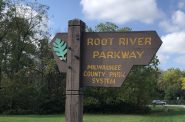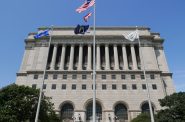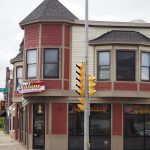DNR Finishes First Milwaukee Tree Census
What is Milwaukee's urban forest like? Report has data from years of tree surveys.

New trees planted in Gordon Park. Photo by Milwaukee County Parks.
What is Milwaukee’s urban forest like?
That’s a question the Wisconsin Department of Natural Resources set out to answer 10 years ago when the agency included the city in a program foresters call the “tree census.”
Officially this is called the Forest Inventory Analysis. The DNR works on the program in conjunction with the U.S. Department of Agriculture‘s Forest Service, which has conducted the analysis for nearly 100 years. Every seven years foresters return to plots of trees across the country and log what’s there.
“We know a lot about our rural forests,” said Dan Buckler, an urban forester with the DNR, but data on urban forests hasn’t been collected, until now.
Foresters have kept track of the trees on 200 plots across the city of Milwaukee, covering private residential, commercial and public land. What they found is that most of the trees in the city are saplings; among mature trees the most common are the Norway maple, boxelder and honeylocust; and nearly half of tall trees in the city are buckthorn, an invasive species originally introduced to the area as an ornamental plant.
The data, collected over the past decade, serves as a reference point, a “moment in time,” Buckler said. As the years go by, provided the tree census endures, information will accumulate describing the changes occurring among the city’s trees: what the predominant species are, how big is the invasive problem, where there are too few trees, and other information. A full report covering urban forests across the state will be released in 2026.
“If we want to improve tree condition, tree health, and expand tree canopy, it kind of behooves us to know more about our urban forest,” Buckler said.
Everyone, even if indirectly, will benefit from a greater understanding of the urban forest, Buckler said. But, specifically, the information will be useful for arborists, foresters, non-profits, city planners and anyone in charge of large populations of trees. To demonstrate the impact, and importance of the trees for everyone else, though, the DNR has applied its tree census data to various models calculating the financial benefit.
Using a universally understood metric like money, the estimated annual benefit of the city’s urban forest amounts to approximately $12.6 million. These number was calculated figuring a tree’s ability to remove pollution from the air, capture stormwater, reduce energy costs and capture carbon.
When it comes to pollution, the U.S. Environmental Protection Agency (EPA) has developed models to calculate the healthcare savings associated with removing certain pollutants from the air. For example, fewer cases of asthma occur among children as the level of certain airborne pollutants go down. Other models calculate how trees can save on energy bills by cooling nearby buildings, or how much money is saved in stormwater treatment and collection.
The Social Cost of Carbon, a widely accepted model used by the EPA and other federal agencies to calculate the cost of rule makings and policy that reduce or create carbon emissions, is also used to calculate the savings from a tree’s carbon capturing ability.
“Trees do so many other things that we can’t put a dollar amount on,” Buckler said.
Trees, in general, are important to human health and well-being, and for supporting wildlife habitats.
“Much of this project is coming from a perspective that trees are generally a very good thing,” Buckler said, “and that we want to both expand the extent of tree canopy in the City of Milwaukee as well as improve the health of the current urban forest.”
Legislation Link - Urban Milwaukee members see direct links to legislation mentioned in this article. Join today
If you think stories like this are important, become a member of Urban Milwaukee and help support real, independent journalism. Plus you get some cool added benefits.
MKE County
-
Parks Awards Contract for Franklin Habitat Restoration Project
 Apr 1st, 2025 by Graham Kilmer
Apr 1st, 2025 by Graham Kilmer
-
Crowley Releases Plan To Make County Carbon Neutral By 2050
 Mar 29th, 2025 by Graham Kilmer
Mar 29th, 2025 by Graham Kilmer
-
Federal Cuts Hit Wisconsin Addiction Treatment, Public Health
 Mar 28th, 2025 by Graham Kilmer
Mar 28th, 2025 by Graham Kilmer





















